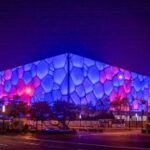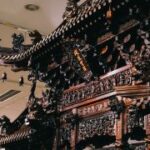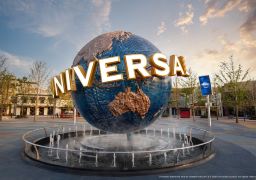The Confucius Temple in Beijing is located on Guozijian Street, adjacent to the Imperial Academy, and was first established during the Yuan Dynasty. It served as the site for the veneration of Confucius during the Yuan, Ming, and Qing dynasties. Highly revered by successive emperors, the temple holds an exalted status and, after multiple renovations, it ranks as the second-largest Confucian temple in China after that in Qufu.
Currently, the Confucius Temple and the adjacent Imperial Academy are open to the public as the Confucius Temple and Imperial Academy Museum, with a unified ticketing system. The ticket office is located next to the main gate of the Confucius Temple; after purchasing a ticket, visitors first explore the temple and then enter the Imperial Academy through the ‘Chijing Gate’ next to the Stele Pavilion. The total visiting time for both sites is approximately 3-4 hours, with about 2 hours dedicated to the temple.When visiting the temple, one should first pay attention to the architecture within the courtyard. Some buildings within the temple have been renovated through the ages but still maintain their Yuan Dynasty style. For instance, the main entrance, the Xianshi Gate, features a large dougong-style hip-and-gable roof, which is quite rare in Beijing and worth visiting. The entire courtyard exudes an ancient charm, with many famous ancient trees and an environment that is simple yet elegant, making it an ideal place for photography.
Another highlight of the Confucius Temple is the numerous steles and stele pavilions scattered throughout its courtyards. These include inscriptions by renowned scholars such as Yuan Chonghuan, Lin Zexu, and Li Hongzhang, as well as a roster of more than 50,000 scholars from the Yuan Dynasty to the end of the Qing Dynasty, and a stele forest engraved with all the Confucian classics. These ancient steles are extremely precious, and their content is well worth visiting.
Watching traditional rites and music performances is another well-known activity at the Confucius Temple. In the Chongsheng Temple within the temple complex, traditional rites and music dances called ‘Dacheng Rites and Music’ are performed several times a day at 10:00, 11:00, 14:00, 15:00, and 16:00 (the number of performances may vary depending on the season and the number of tourists), each lasting for half an hour. The performances include chapters such as ‘Learning and Thinking,’ ‘Blessings,’ ‘Guan Ju,’ and ‘The Great Harmony,’ all of which are steeped in the ambiance of traditional Chinese studies and are very impressive. Visitors should note the performance times and plan their visit accordingly.
In addition, the temple complex also includes the Dacheng Hall for worshiping Confucius, the Chongsheng Temple for commemorating numerous sages and their ancestors, the Confucius Temple Historical Evolution Exhibition Hall, and the Chinese Studies Hall. Here, visitors can see the ritual vessels, memorial tablets for Confucius, and learn about the historical evolution of the Confucius Temple. The entire complex is open all year round from Tuesday to Sunday, 09:00 to 17:00; closed all day on Mondays; and open 09:00 to 17:00 on June 10th. Must-see tips: 1.
The Confucius Temple is located only about 100 meters away from the Lama Temple, making it a convenient destination to visit together on foot.









